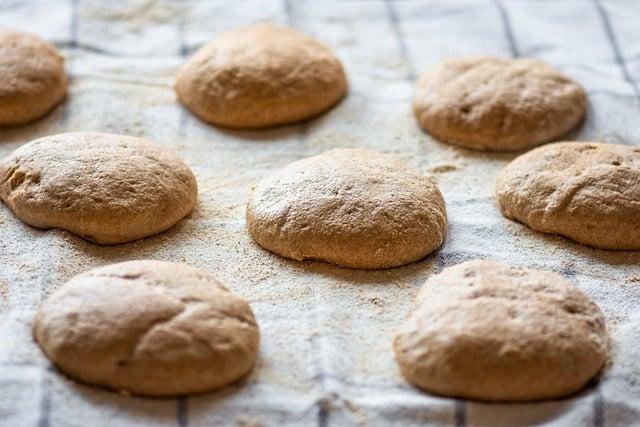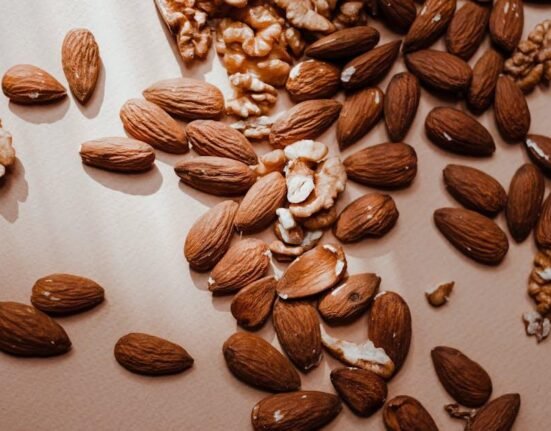In the intricate dance of managing diabetes, diet emerges as both a compass and a catalyst—guiding blood sugar levels toward balance and fostering overall well-being. Food, often seen as comfort or convenience, transforms into a powerful tool, shaping the daily experience of those living with this chronic condition. This article delves into the art and science of managing diabetes through diet, exploring how mindful choices at the table can empower individuals to take control, reduce complications, and lead vibrant, nourishing lives.
Table of Contents
- Understanding the Role of Nutrition in Diabetes Control
- Balancing Carbohydrates for Steady Blood Sugar Levels
- Incorporating Fiber-Rich Foods to Improve Insulin Sensitivity
- Choosing Healthy Fats to Support Heart Health
- Meal Planning Strategies for Consistent Energy and Glucose Management
- Hydration and Its Impact on Diabetes Management
- Q&A
- The Way Forward

Understanding the Role of Nutrition in Diabetes Control
Controlling blood sugar levels involves a delicate balance of various nutrients that directly influence how the body processes glucose. Emphasizing foods rich in fiber, lean proteins, and healthy fats helps slow down sugar absorption, which prevents sudden spikes and crashes. Incorporating whole grains, fresh vegetables, and nuts into daily meals not only supports better glycemic control but also promotes overall cardiovascular health—a key concern for those managing diabetes.
Understanding the impact of different food groups can empower you to make informed choices. Consider the following nutritional elements:
- Carbohydrates: Opt for complex carbs with low glycemic index.
- Proteins: Include plant-based proteins and lean animal options.
- Fats: Favor unsaturated fats found in avocados, olive oil, and fish.
- Fiber: Enhances digestion and stabilizes blood sugar.
| Nutrient | Recommended Sources | Impact on Diabetes |
|---|---|---|
| Fiber | Oats, Lentils, Vegetables | Improves blood sugar control |
| Proteins | Chicken, Beans, Tofu | Supports muscle repair and satiety |
| Fats | Olive oil, Nuts, Fish | Reduces inflammation and aids heart health |
| Carbohydrates | Quinoa, Sweet Potatoes, Whole Fruits | Provides sustained energy release |

Balancing Carbohydrates for Steady Blood Sugar Levels
Maintaining a balanced intake of carbohydrates is key to preventing the blood sugar spikes and crashes that can make diabetes challenging to manage. Rather than eliminating carbs entirely, focus on choosing sources that release energy slowly. These include whole grains, legumes, and non-starchy vegetables, which provide fiber—a nutrient that not only aids digestion but also helps moderate glucose absorption. Combining carbohydrates with proteins and healthy fats can further slow down sugar absorption, resulting in more even blood sugar levels throughout the day.
To make smart carbohydrate choices, consider the following guidelines:
- Opt for low glycemic index (GI) foods like quinoa, oats, and lentils, which cause a gradual rise in blood sugar.
- Limit highly processed carbs, such as white bread, sugary snacks, and sodas, as they can spike glucose rapidly.
- Pair carbs with fiber-rich foods such as vegetables or nuts to enhance blood sugar control.
- Portion control is crucial; keeping carbohydrate servings consistent throughout the day prevents unexpected elevations.
| Carbohydrate Type | Example | Recommended Frequency |
|---|---|---|
| Low GI | Barley, Sweet Potatoes | Daily |
| Moderate GI | Whole Wheat Bread, Brown Rice | Several times weekly |
| High GI | White Bread, Sugary Drinks | Occasionally & in small amounts |

Incorporating Fiber-Rich Foods to Improve Insulin Sensitivity
Fiber plays a crucial role in managing blood sugar levels by slowing down the digestion and absorption of carbohydrates. This gradual process helps prevent sudden spikes in blood glucose, thus enhancing your body’s insulin sensitivity. To benefit fully, focus on incorporating a variety of soluble fibers, which dissolve in water forming a gel-like substance that moderates blood sugar, alongside insoluble fibers that promote digestive health.
- Oats and barley – rich in beta-glucan, a powerful soluble fiber
- Legumes like lentils and chickpeas – packed with both fiber and protein
- Fresh vegetables such as carrots, broccoli, and Brussels sprouts
- Fruits including apples, berries, and pears, eaten with their skins
| Fiber Source | Type of Fiber | Benefit for Insulin Sensitivity |
|---|---|---|
| Chia Seeds | Soluble & Insoluble | Slows glucose absorption |
| Sweet Potatoes | Soluble | Improves gut health + steady energy release |
| Almonds | Insoluble | Supports digestion and fullness |

Choosing Healthy Fats to Support Heart Health
Incorporating healthy fats into your daily meals is a smart strategy for enhancing heart health while managing diabetes. Not all fats are created equal; focusing on unsaturated fats, such as monounsaturated and polyunsaturated fats, can help reduce bad cholesterol levels and lower the risk of cardiovascular disease. Sources rich in these beneficial fats include avocados, nuts, seeds, olive oil, and fatty fish like salmon and mackerel. These fats not only support heart health but also aid in maintaining steady blood glucose levels, making them a double win for those balancing diabetes.
Conversely, it’s vital to limit the intake of saturated and trans fats, commonly found in processed snacks, fried foods, and high-fat dairy products, as these can contribute to arterial plaque build-up and aggravate insulin resistance. To help you navigate your fat choices, consider the following simple guide:
- Choose: Extra virgin olive oil, walnuts, chia seeds, and flaxseeds.
- Avoid: Butter, lard, hydrogenated oils, and commercially baked goods.
- Include: Fatty fish at least twice a week for a heart-healthy omega-3 boost.
| Fat Type | Sources | Heart Health Effect |
|---|---|---|
| Monounsaturated | Olive oil, avocados, almonds | Improves cholesterol, reduces inflammation |
| Polyunsaturated | Salmon, flaxseeds, walnuts | Supports heart rhythm, lowers triglycerides |
| Saturated | Butter, cheese, fatty cuts of meat | Raises LDL cholesterol, increases heart risk |
| Trans Fats | Fried foods, baked goods, margarine | Increases LDL, lowers HDL cholesterol |

Meal Planning Strategies for Consistent Energy and Glucose Management
Maintaining steady energy levels and balanced blood glucose throughout the day can feel like a delicate dance—but with thoughtful meal planning, you can take control with confidence. Start by prioritizing balanced meals that combine complex carbohydrates, healthy fats, and quality proteins. Incorporating fiber-rich vegetables and whole grains slows glucose absorption, preventing hazardous blood sugar spikes and crashes. Small, frequent meals or snacks can also play a pivotal role: they provide a continuous energy stream, curb overeating, and help you avoid sudden drops in glucose that undermine focus and vitality.
Creating a personalized meal schedule tailored to your daily routine can make a world of difference. Consider using a simple table to map out ideal meal times alongside snack options that stabilize glucose:
| Time | Meal/Snack | Glucose Stabilizers |
|---|---|---|
| 7:00 AM | Breakfast | Oatmeal + Nuts + Berries |
| 10:00 AM | Snack | Greek Yogurt + Seeds |
| 1:00 PM | Lunch | Quinoa Salad + Grilled Chicken |
| 4:00 PM | Snack | Apple + Almond Butter |
| 7:00 PM | Dinner | Steamed Veggies + Salmon + Brown Rice |
Alongside timing, focusing on consistent portion sizes and avoiding high-sugar processed foods amplifies your control over glucose swings. Always keep a few go-to snacks ready that combine protein and fiber, such as hummus with veggie sticks or a handful of nuts, to help maintain balance and energize your day.

Hydration and Its Impact on Diabetes Management
Maintaining optimal fluid intake is a critical yet often overlooked component of diabetes care. Proper hydration assists in regulating blood sugar levels by helping the kidneys eliminate excess glucose through urine. When dehydrated, blood sugar concentrations can become more concentrated, potentially leading to hyperglycemia. Incorporating water-rich foods such as cucumbers, watermelon, and oranges into your diet can complement your fluid intake while providing essential nutrients.
Tips for effective hydration in diabetes management:
- Choose water as your primary drink; avoid sugary beverages.
- Monitor your urine color to gauge hydration—pale yellow indicates good hydration.
- Set reminders to drink water regularly during the day.
- Adjust fluid intake based on activity levels and ambient temperature.
| Hydration Benefit | Impact on Diabetes |
|---|---|
| Improves Blood Sugar Control | Reduces glucose concentration in blood |
| Supports Kidney Function | Enhances glucose elimination |
| Prevents Dehydration-Related Complications | Minimizes risk of hyperglycemia |
Q&A
Q&A:
Q1: Why is diet so important for managing diabetes?
A1: Diet is a cornerstone of diabetes management because what you eat directly impacts your blood sugar levels. Consistent, balanced meals help maintain stable glucose, reducing the risk of complications and supporting overall health.
Q2: Are there specific foods people with diabetes should always avoid?
A2: Instead of thinking in black and white, it’s better to focus on moderation. Highly processed sugars, excessive refined carbs, and sugary drinks can spike blood sugar and should be limited. Whole, unprocessed foods are generally safer choices.
Q3: How can carbohydrates fit into a diabetic-friendly diet?
A3: Carbohydrates aren’t the enemy—they’re essential energy sources. Opt for complex carbs like whole grains, legumes, and vegetables, which digest slowly and cause gradual blood sugar rises, helping you stay energized without sudden spikes.
Q4: What role do fiber and protein play in managing diabetes through diet?
A4: Fiber slows down glucose absorption, smoothing out blood sugar fluctuations, while protein supports muscle health and provides satiety. Including both in meals can balance energy and prevent overeating.
Q5: Is there a “one-size-fits-all” diabetic diet?
A5: Not exactly. Personal preferences, lifestyle, and individual blood sugar responses vary. Working with a dietitian can help tailor a meal plan that fits your life, tastes, and health goals.
Q6: How important is timing and meal frequency for blood sugar control?
A6: Timing can greatly influence blood sugar. Regular meals and snacks can prevent sharp drops or rises. Spacing eating occasions evenly helps your body manage glucose more smoothly.
Q7: Can managing diabetes through diet replace medication?
A7: For some people with type 2 diabetes, lifestyle changes including diet can reduce or delay the need for medication. However, this depends on the individual’s condition and should always be managed with medical guidance.
Q8: Are there any superfoods for diabetes?
A8: While no single “superfood” cures diabetes, foods like leafy greens, nuts, berries, and fatty fish provide nutrients that support healthy glucose metabolism and overall wellness.
Q9: What’s the best mindset for someone beginning dietary changes to manage diabetes?
A9: View it as a journey rather than a strict regimen. Small, consistent improvements add up, and flexibility allows you to enjoy food while keeping your health on track.
Q10: How can one stay motivated to maintain a diabetes-friendly diet?
A10: Setting achievable goals, celebrating progress, seeking support from community or professionals, and focusing on how dietary choices improve your well-being can keep motivation alive in the long run.
The Way Forward
In the intricate dance of managing diabetes, diet emerges not just as a set of rules, but as a powerful tool—one that balances life, health, and pleasure on the plate. By embracing thoughtful food choices and mindful habits, individuals can steer their journey with confidence and resilience. While the path may have its challenges, each meal becomes an opportunity to nurture the body and reclaim control. After all, managing diabetes through diet is less about restriction and more about rediscovery—a chance to cultivate well-being one bite at a time.















Leave feedback about this